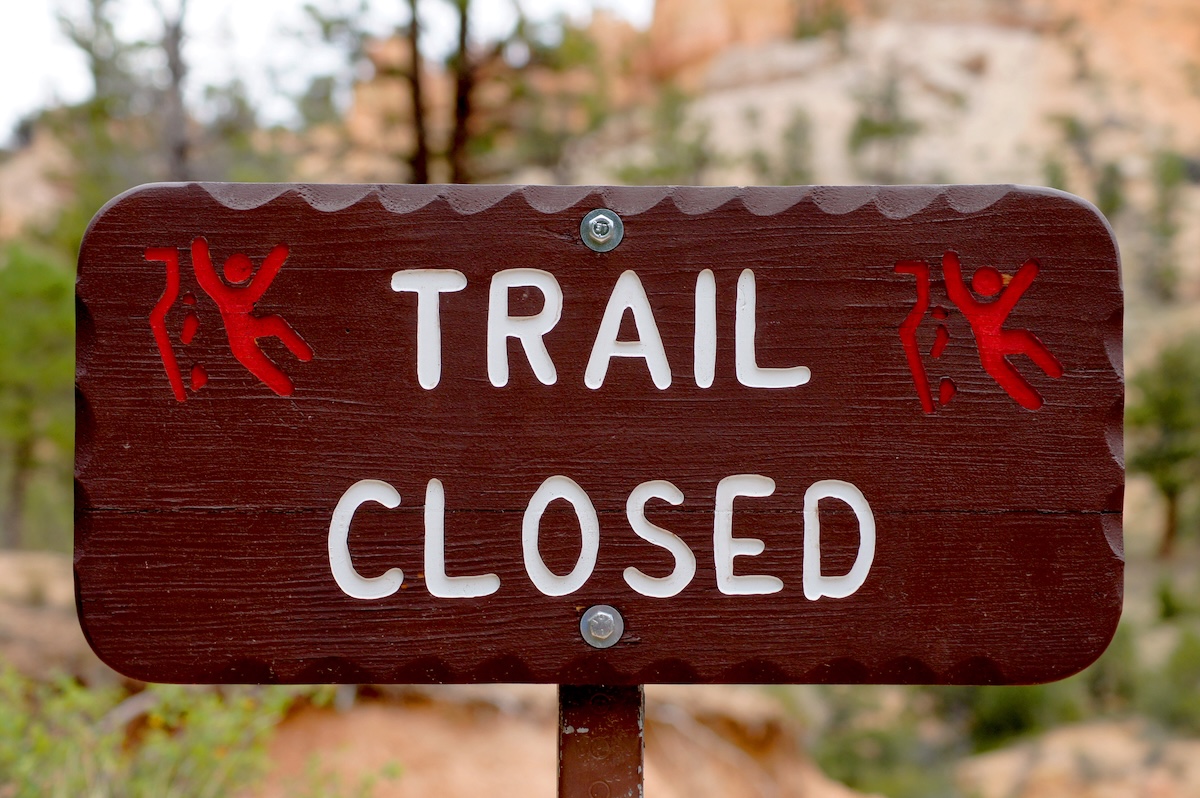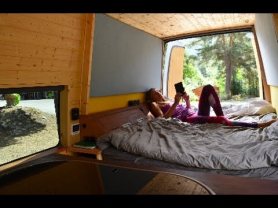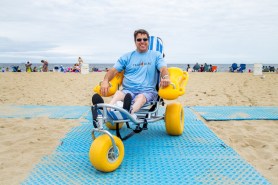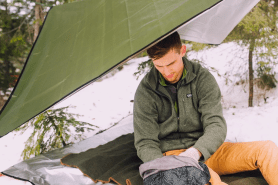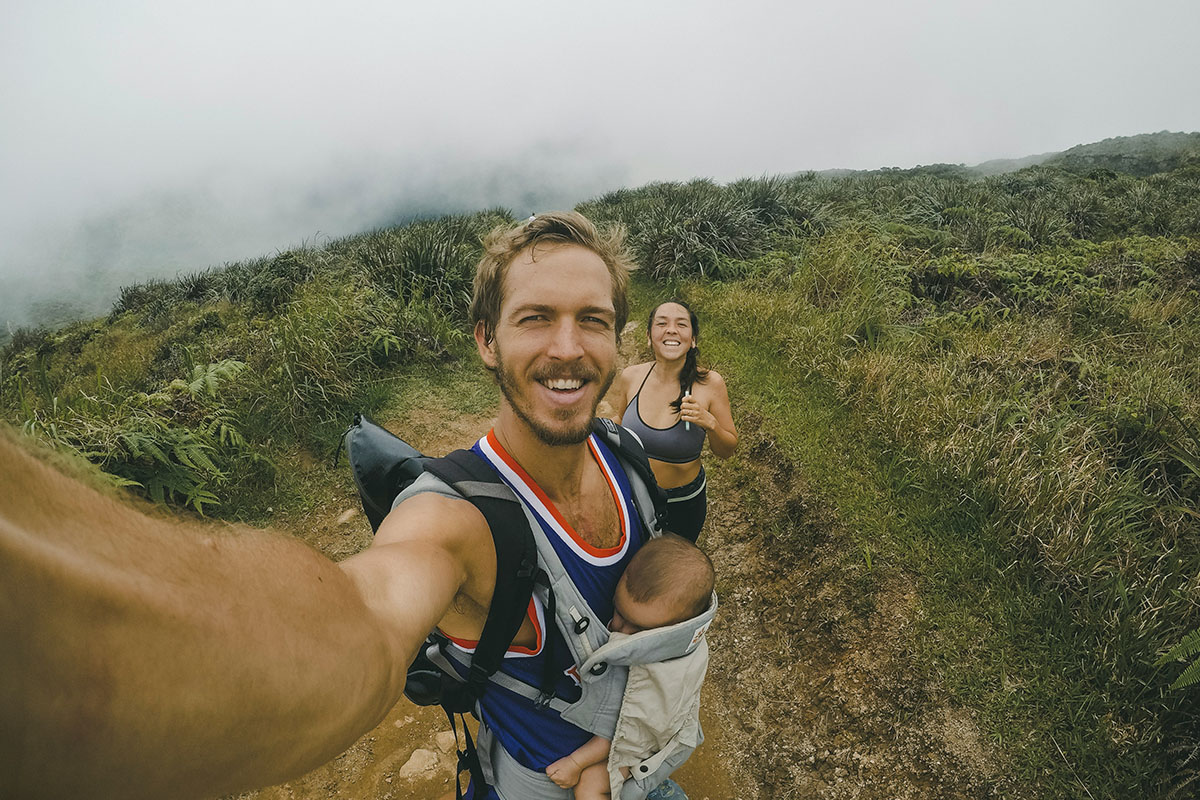

I’ve witnessed what hiking can do for a kid’s confidence, gross motor skills, and appreciation for nature, and I have to say, I like what I’ve seen. Some of my favorite memories with my kids so far have been hiking—from wandering through a Costa Rican cloud forest to climbing boulders in Joshua Tree National Park. My kids, on the other hand, will say their favorite hikes involve splashing in water (more on that later).
Videos by Outdoors
Research suggests that in the United States, 43.3% of people qualify as sedentary. For kids, “sedentary” means fewer than 60 minutes of physical activity per day. A sedentary lifestyle can lead to health issues both in adolescence and in adulthood.
Hiking is a relatively easy way to be active outdoors since it doesn’t require a ton of specialized gear to get started, and you don’t need a high level of physical fitness to start, either. For kids and families, hiking is a great way to be active together, make memories, and enjoy the great outdoors.
It’s also a great way to teach kids how fun it can be to live an active lifestyle. Teach by example, and they will follow your lead—at least that’s the idea, right?
Hiking with kids isn’t always easy, though, and I can think of plenty of hikes that weren’t rainbows and sunshine for my family. Kids get tired, hungry, bored, and just cranky, and not even a snack break can cure every woe out on the trails.
If you can accept that not every second of every hike with your kids is going to be a good time, you’ve already crossed the first hurdle, which is adjusting your expectations. If you’re ready to get started hiking with your little ones, keep reading. In this guide, we cover 10 top tips for hiking with kids, tell you what to pack, and more.
Top 10 Tips for Hiking With Kids
1. Start Young and Hike Regularly
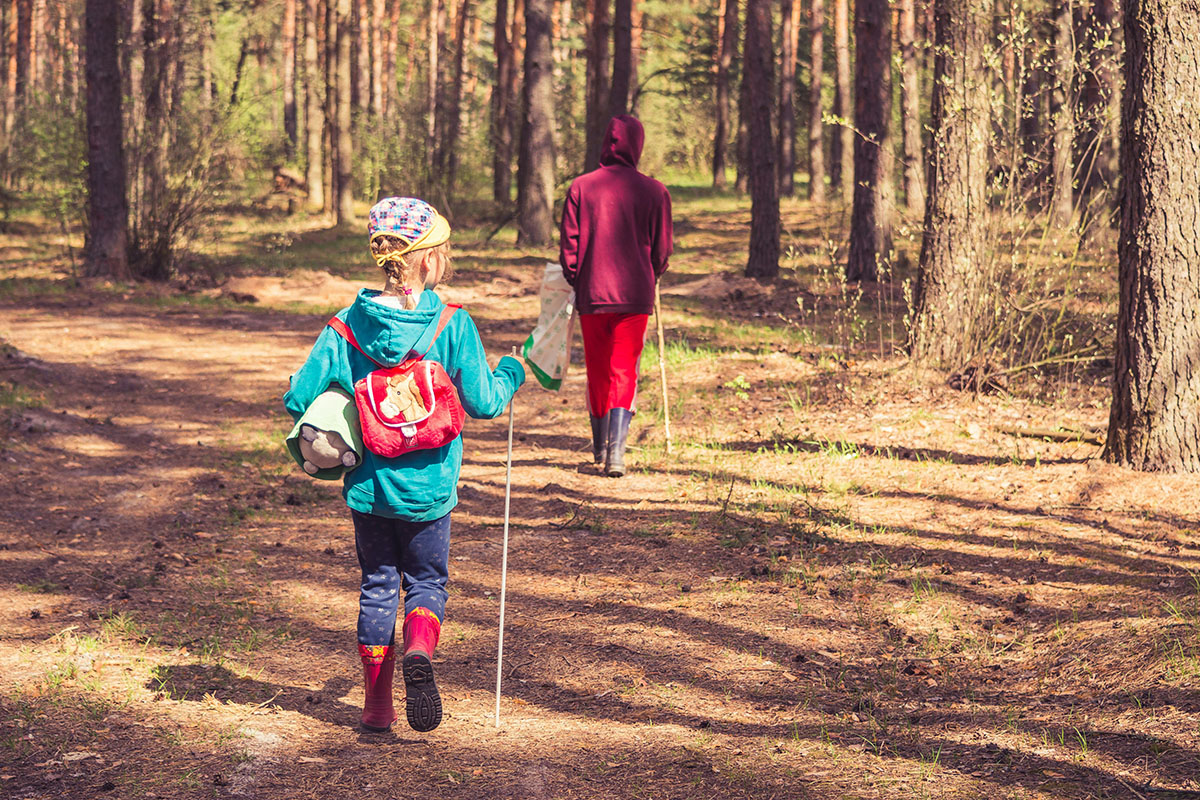
If you’re wondering when you should start hiking with kids, the answer is as soon as you want to and can. My two kids went “hiking” (i.e., were carried around in a baby carrier on a trail) quite young, starting at five weeks old, in my son’s case. When your child starts walking is a great age to get her out on the trails for her first “hike” on her own two feet.
Hike early on in your kids’ lives to establish outdoor activities as an important part of your family life. The more you go, the more they’ll know what to expect and, hopefully, come to enjoy it as much as you do.
If you have older kids, it may be too late to “start early,” but it’s never too late to get your kids hiking by going out regularly for some quality time in nature.
2. Choose Short Hikes Close to Home
New parents going out with their infant or parents with toddlers looking to give hiking a try should consider starting with shorter, easier hikes that are relatively close to home. Set yourself up for success by finding kid-friendly hikes with wide paths and little to no elevation gain.
You might choose a loop trail that’s a mile or less or an out-and-back trail that’s a half-mile or less each way with a point of interest at the end. Some trails are even paved, in case you have an infant or toddler you’d like to push in a stroller. Otherwise, bring a baby carrier or a hiking backpack carrier to carry young kids when they inevitably get tired.
For school-aged kids, try not to carry them unless they really need it, so you don’t inadvertently establish a precedent that you’ll pick them up as soon as they’re tired. Starting with short hikes and building to longer ones will help ensure you’re choosing appropriate trail lengths for your child’s age and physical abilities. If you go out regularly, it’ll also help build their endurance.
3. Find Trails with Water . . . and Let Them Splash
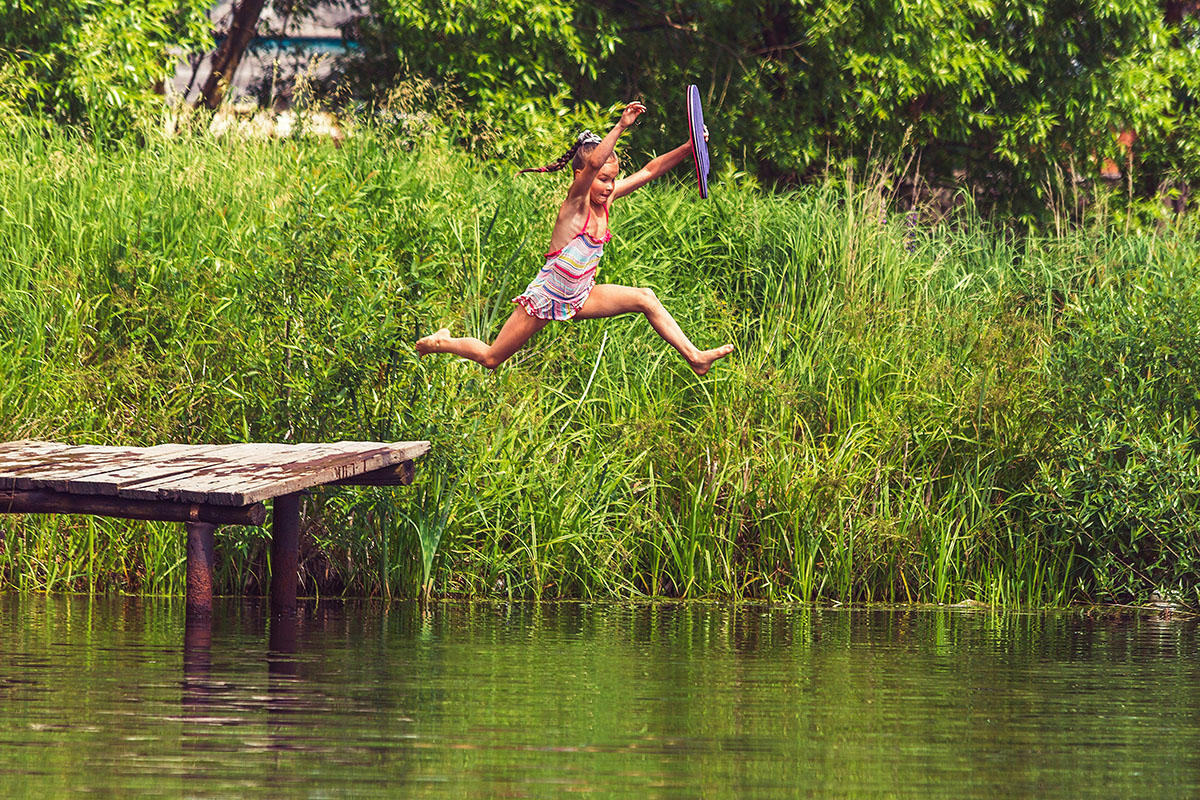
Some of the best kid-friendly trails intersect or wind alongside water—because what’s more fun than a creek? (Nothing, if you ask my kids.)
Weather permitting, if there’s a chance to splash in a creek, river, lake, ocean, or even a puddle, this is a great way to get your kids excited and have fun. If the temperature drops or your kids complain about being wet afterward, bring dry clothes in your day pack. If it’s warm or hot out, the kids may enjoy being wet and feeling cool for the rest of the hike.
Hiking in soggy shoes is terrible at any age, though, so bring or have your kid wear hiking water shoes, if you know about the water ahead of time (we make a recommendation for best hiking water shoes for kids in our roundup article). If the water is a surprise, you can have them take off their shoes and splash in it, depending on the situation.
4. Let Kids Lead
Kids love to lead! Let them be the leaders, and challenge them to find and follow the trail—a big responsibility and not always an easy one, depending on the trail. Teach kids trail etiquette, such as sticking to the righthand side of the trail, passing, and letting others pass.
I’ve found that other hikers typically enjoy seeing kids on the trails and show patience when they see that the kids are trying but still learning about hiking etiquette.
Let your kids set the hiking pace, when you can (there will be times when you need to step in and take the lead), and respect their limitations. As all parents know, just because your kid did two miles last time does not necessarily mean that same kid showed up to today’s hike.
5. Play Games
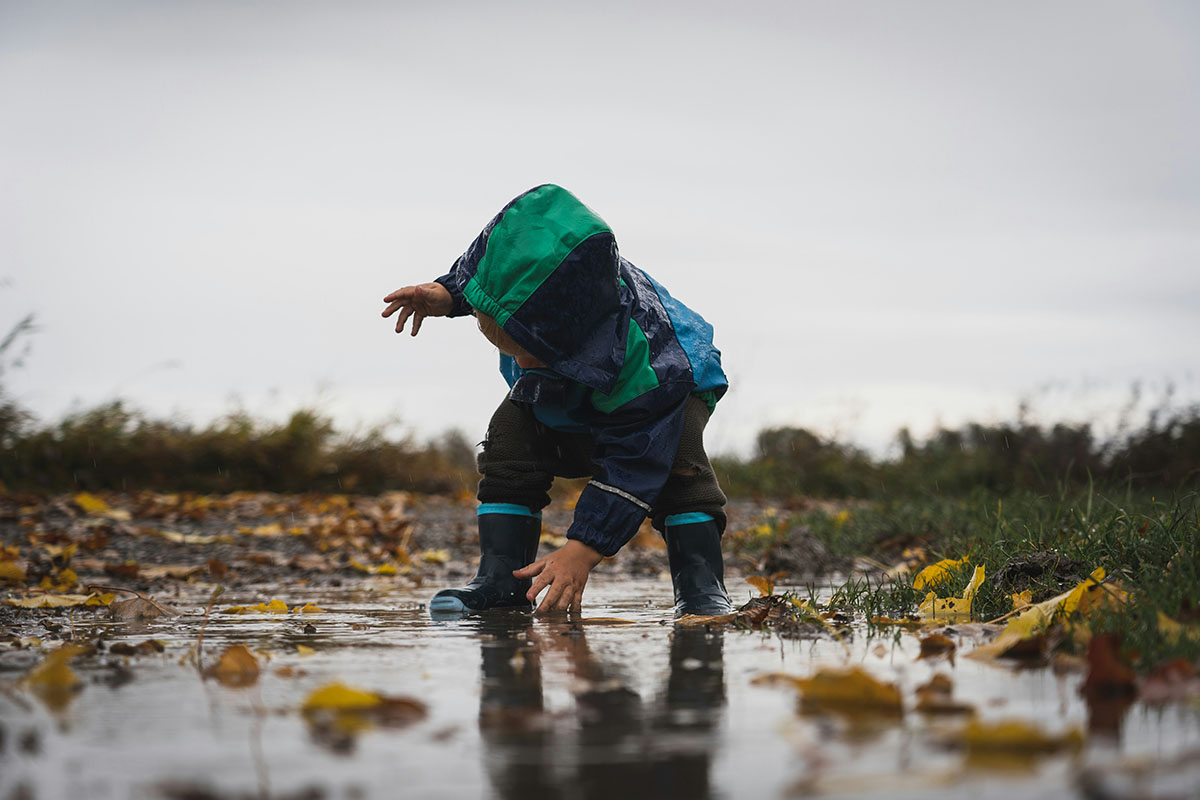
Keep things fun and keep kids motivated by playing some hiking games on the trails. Hiking games can be as simple as I Spy or running ahead to find the next trail marker. You can also come prepared by giving kids a scavenger hunt or a naturalist notebook to draw and write about what they see as they hike.
You can play pretend games, like Find the Fairies (my daughter’s favorite), Rock Monsters (my son’s favorite), or anything you can think of to encourage forward movement. If the trail allows, you can chase them for some extra fun, hop on rocks or logs, or even just sing songs and skip to the beat.
6. Stop a Lot
When hiking with kids, plan to stop a lot. Despite all your valiant efforts to keep them moving forward, kids are kids; and hiking with kids means being OK with hiking at a kid’s pace.
Try to stop with intention, when you can, making stops positive, especially if they tend to be opportunities for whining and complaining.
Here are some ideas for intentional, positive stops when hiking with kids:
- Stop to take pictures or let your kids take pictures
- Stop to explore around the trail (careful not to stray from the trail on delicate ecosystems)
- Stop to enjoy a view or celebrate your progress
- Stop to eat a snack and/or drink water
- Stop to look for animal tracks, identify plants, and/or look at insects through a magnifying glass
7. Pack Smart
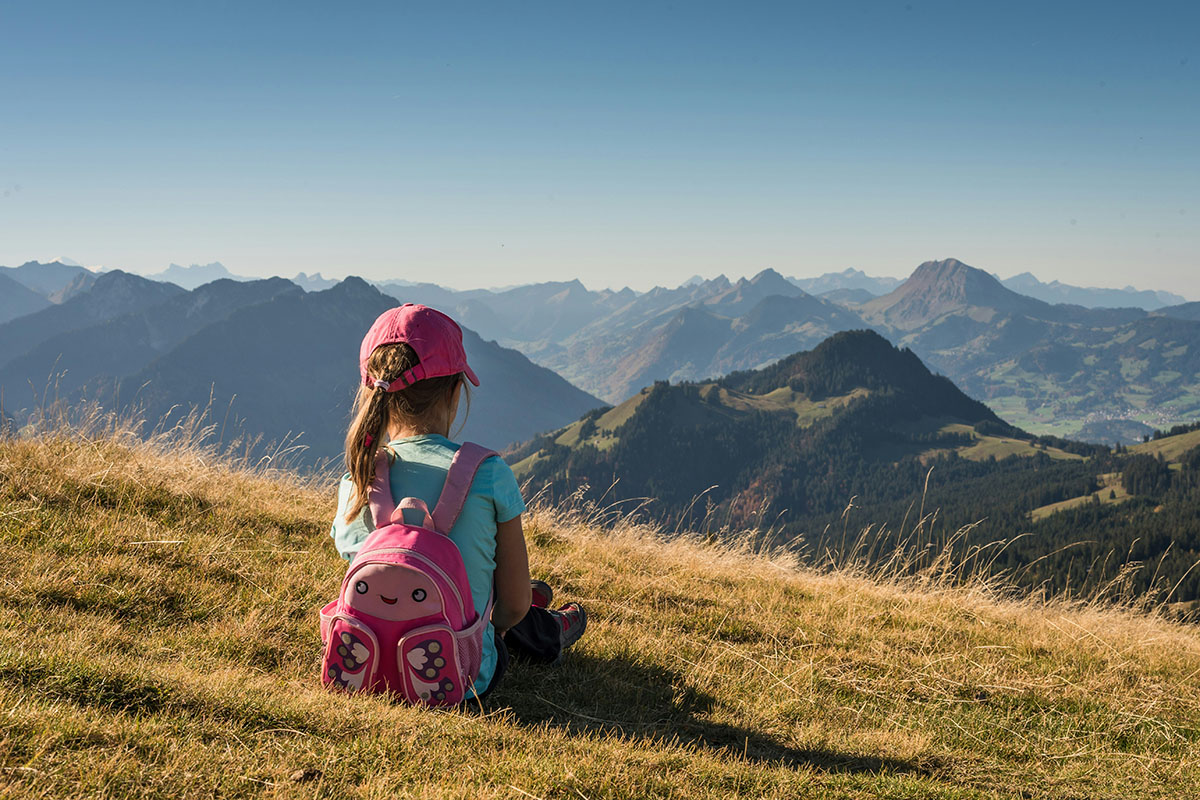
For a successful hike with the whole family, pack what your kids need and maybe a little extra for good measure. When kids hike, they eat even more snacks than usual, so bring snacks like trail mix, fruit, granola bars, cheese, on-the-go packs of peanut butter, jerky, and fruit snacks or fruit leather to keep them going.
Pack the right clothing for the weather and the right shoes for the terrain. Don’t forget sun protection, and have a sun hat for each kid or sunscreen to shield them from harmful rays.
Bring all the hiking essentials, like water bottles and a first-aid kit, plus some kid-specific items that’ll make their hike more enjoyable, like a favorite stuffed animal or a Band-Aid with a princess on it, just for some bonus points in case of a scrape or fall.
See a more detailed packing list below.
8. Get Kids Their Own Gear
If you plan to take your kids hiking on a regular basis, invest in proper hiking gear for kids, like actual hiking shoes (versus regular tennis shoes) and a small pack for small stuff. If they have their own packs, kids can carry their own snacks and water bottles.
You might also invest in some hiking clothes for your kids, like moisture-wicking shirts and lightweight hiking shorts or pants, plus hiking hats and sunglasses.
9. Don’t Be Afraid to Push a Little
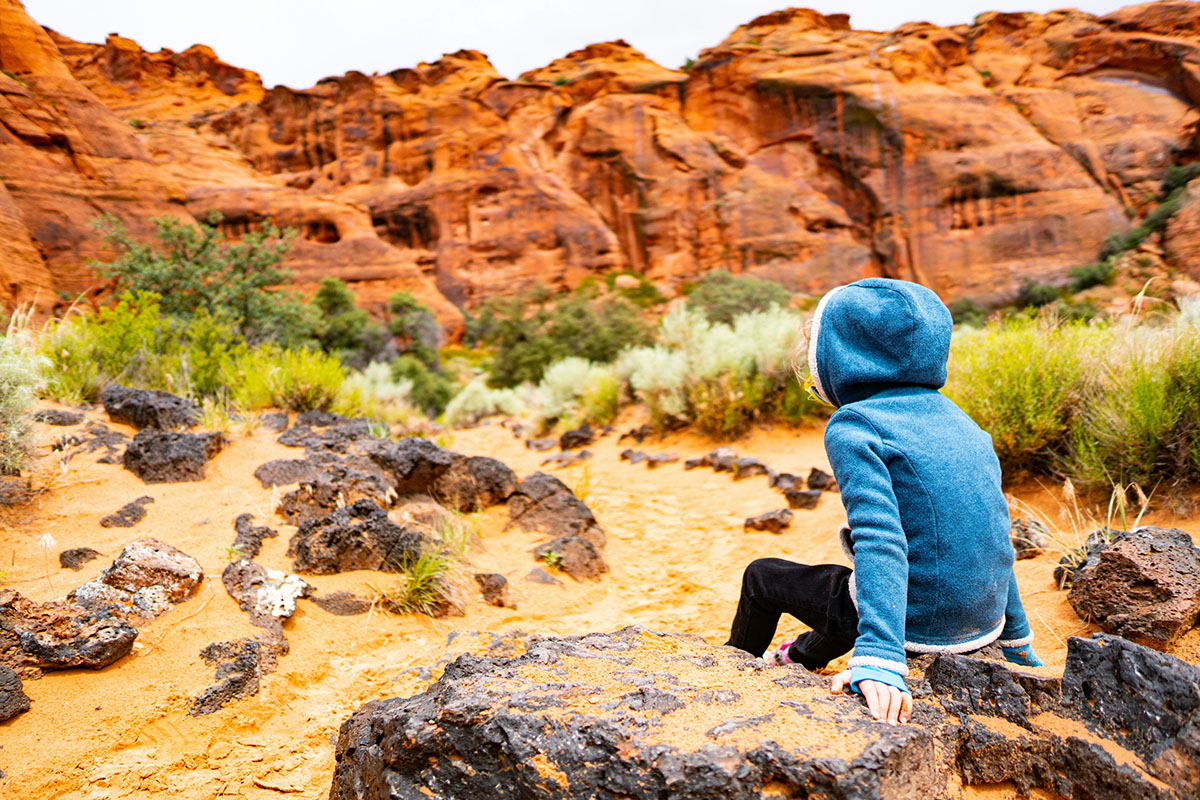
To build your older kids up to longer hikes, you’ll need to push them a little. Only you know your kids’ hiking limits and capabilities (there’s no magic age where children can start hiking over two miles, for instance), so use discretion in choosing when to encourage them to persevere and when to recognize that they’ve reached their limit.
The more positive experiences kids have on hiking trails, the more internally motivated they’ll be to enjoy hiking and finish what they started. Plus, if you help make those experiences positive, they may want to hike just to spend time with you.
10. Turn Around If You Need to
Being flexible is paramount when hiking with kids. The destination is not the goal here, the experience is. If an experience starts to turn sour, you’re not doing yourself or your kids any favors by forcing them to finish a hike. It’s perfectly OK to turn back and cut a hike short if you’ve suddenly got cranky kids on your hands.
There’s always the chance that your kids will be done and turning around is no shorter than finishing a hike. In that case (we’ve all been there), try to rally the troops with some fun and games, some snacks and drinks, or come up with an enticing plan for the way home that everyone can get behind, like stopping for ice cream.
What to Pack When Hiking With Kids
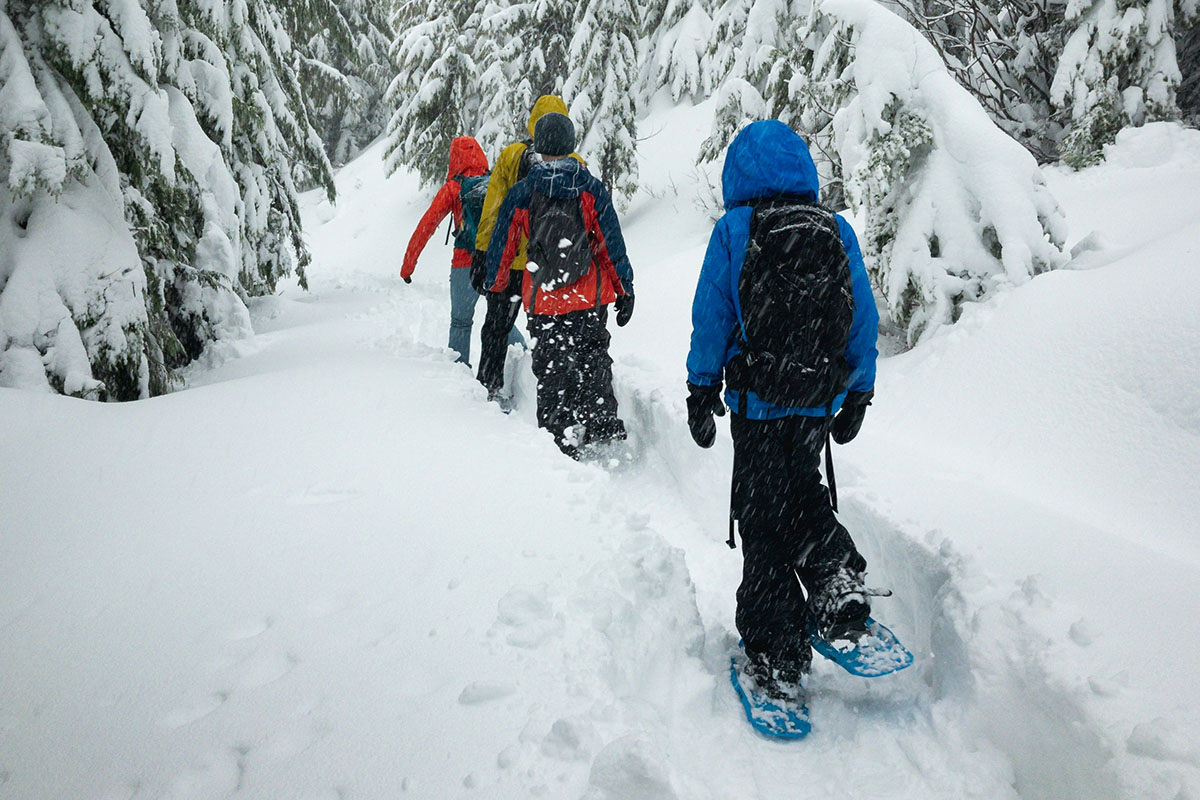
When hiking with kids, it’s important to be prepared with the 10 essentials for hiking: navigation tools, sun protection, extra clothing, a light source, a first-aid kit, fire supplies, tools and a repair kit, food, water, and shelter. You can find a full hiking essentials packing list in our guide to day hiking.
Also consider these items when hiking as a family:
- Hiking backpack carrier or baby carrier
- Sun hats for kids/infants with a drawstring to keep it on
- Sunscreen with an SPF rating of 30 or higher and/or UPF-rated clothing
- Weather-appropriate layers: Moisture-wicking base layer, insulating layer, lightweight outer shell or rain jacket
- Gloves and extra socks (for cold or wet weather)
- Snacks kids will actually eat
- Enough water: 1-2 liters of water per person for every two hours of hiking
- Water-filtration straw or purification tablets
- Insect repellent (check age recommendation before using on kids)
- Wet wipes
- Diapers and a wet bag or trash bag to pack out trash
- Kid-sized camera, kid binoculars, a magnifying glass, or other tools to help kids enjoy hiking
- Safety whistle
- Bear spray (if appropriate for your area)
Safety Considerations
Fuel your kids with enough food and water when hiking. Keep them from getting dehydrated by reminding them to drink often. I pass a water bottle around to everyone each time I take a drink while hiking to keep the kids sipping on fluids regularly.
If you have a hard time remembering to take regular drinks, have someone in your group set a timer for every 20 minutes. When the timer goes off, everybody takes a drink of water or an electrolyte-replenishing drink.
Hiking with kids is a perfect time to educate them about wildlife and how to co-exist safely with animals while in nature. Teach them to stay on the trail, watch for snakes, and listen for animals. Depending on what animals live in your area, you might choose to educate them on what they can do if they come across a bear, a mountain lion, a deer, or a snake.
Planning ahead can also help you stay safe on a family hike. Research the trail and the conditions ahead of time, and always check the weather before you leave to ensure you’ve dressed your kids in the proper clothing. Letting kids pick their outfits is perfect for play dates, but maybe not for hike days, unless they’re willing to accept your guidance.
As is true with many other aspects of parenting, when hiking with kids, you need to find a balance between keeping them safe and letting them take risks. This can be challenging, especially as kids get older and more capable.
Raising Good Stewards
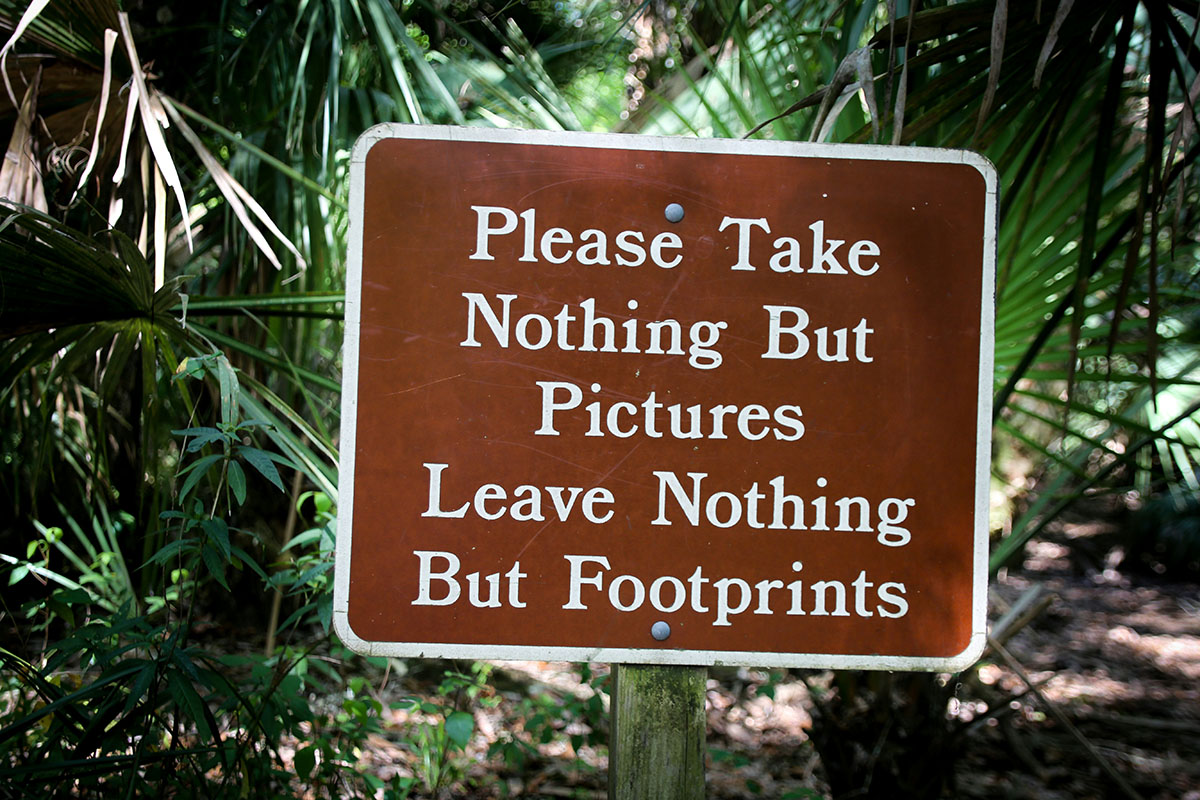
Bringing the whole family on a hike is a good way to teach children the importance of taking care of the places they love. While hiking with kids, pack out what you pack in, pick up stray trash and tell the kids why you’re doing it, and respect the environment you’re in by keeping a respectful distance from wildlife and staying on marked trails.
Practice Leave No Trace principles and show kids that it’s hikers’ job to leave trails better than they found them.
So, Hiking with Kids—Yay or Nay?
Family hikes are a fantastic way to get some fresh air, move your bodies, and enjoy beautiful places like national parks together. If you have little kids in tow, you can still get outdoors and enjoy hiking, just adjust your expectations.
Remember, hiking with kids should be more about enjoying the experience than getting your family to a particular place or reaching a mileage goal.
For some more inspiration, check out these incredible parents’ tips for outdoor adventuring with kids. Happy hiking!

